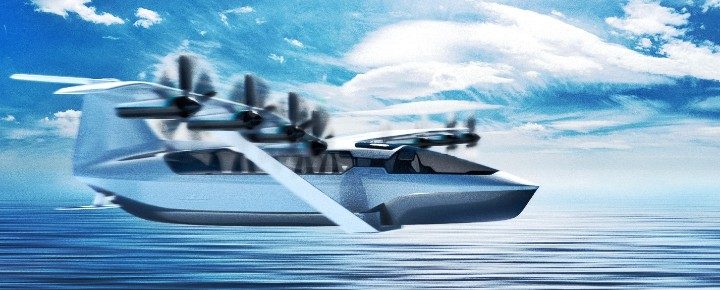Maneuvering within harbors like a boat; once in open water, they rise to operate more like a plane. But what about humpback whale safety?




Maneuvering within harbors like a boat; once in open water, they rise to operate more like a plane. But what about humpback whale safety?
Comments are closed.
I’m still “memorized” by the video…
Flying between the islands will mean encountering very heavy crosswinds. Since these planes depend so much on the air cushion between the plane and the ocean, I wonder what effect very heavy 30 to 40 mph winds will have on that air cushion.
Will it make the air cushion ineffective? or and will it make the ride very bumpy? Instead of seasickness there may be serious air sickness.
Your article said what I was already thinking….. what about marine mammals? Winter in HAwaii is my favorite for the Humpbacks. I would be concerned about them. I know the propellers aren’t in the water w/these seagliders, but I have sure seen what boat strikes do to countless manatees. I will have to learn more to decide what I think on these sea gliders.
With all the light weight composites used in a plane like this, if the Seaglider hits a humpback, then the whale, the plane and all the people on board are going to die. And lets not forget that out in that big ocean there are small boats, including sailboats with tall wood masts, that cannot be seen on radar, therefore at 200mph (or kts), there is not enough time to avoid a deadly collision.
Mahalo for an interesting article.
These ‘aircraft’ are known as ‘Erkanoplan’, and were developed in the USSR. The most famous is the ‘Caspian Sea Monster’ youtube.com/watch?v=V8Nu94khHoo a weaponized prototype, that tturned out to not have a misson. Very interesting craft, and several smaller versions have been built and ‘flown’ by ventures and homebuilders.
I find the concept for interisland travel very interesting, but I have my doubts as to the ambitous timeframe. When and if ever they fly, I will be one of the first in line for a ticket!
Hi George.
Good to hear from you. Thanks for sharing that.
Aloha.
To the fear of hitting a breaching whale;
A Wing In Ground Effect craft optimum altitude is one-half the total wingspan. It’s highly unlikely that w whale could get high enough to breach into the path.
Humpbacks can breach 50 feet out of the water. One half the wingspan is measured from the wing, not the bottom of the fuselage. So unless the Seaglider flies at least 100 feet above the water and more likely 150 feet- I doubt Hawaii’s strict marine laws would allow anything lower- at which altitude it would lose its ground effect, this concept won’t fly, excuse the pun.
Interesting. It might need some old/new infrastructure since they won’t be landing at existing airports. Okay, Honolulu does kind of stick out into the ocean, but maybe reactivate some of the old seaplane landings.
George,
I watched that video. To my untrained eye, it looked like jet engines, while the plane HA plans to use is a prop job.
I’d like to fly on one, but I doubt they will save the planet. And, by 2028, the price will probably not make sense.
Hope you get to make that first flight!
BOH, Good point about breaching humpbacks. If one of these jobbies hits a breaching whale, it would not only kill the whale but destroy the plane/boat, possibly kill passengers. Or….. do humpbacks breach in only certain areas, like ten miles from shore? Or do they also breach in the open ocean? Maybe you or one of our smart subscribers has an answer.
outstanding, just what hawaii needs and with minimal environmental impact. i would go interisland just for the ride alone. will it service kauai?
Looks like a fun and safer way to travel.
Hope it is successful!
Mesmerizing! Can’t wait to read this article, only have time to scan right now, thank you!
Lanell
Hi Lanell.
Thanks. Glad you had time to comment.
Aloha.
How will they avoid breaking or fluking whales?
I meant breaching whales!
“The plan is to provide Hawaii with interisland transportation at a fraction of the cost, noise, and emissions of existing interisland flights.”
The regular price in your article would have been $600 mil for 20 planes, that’s $30 mil each. And, that was for 15 of the 12 pass & only 5 of the 100 passenger planes. Let’s say the 100-passenger planes would cost $75 mil each. Close to the cost of a 737.
Not much savings there – but some is better than none. What about fuel vs electricity? Without knowing all costs how could you say a “fraction of the cost.”
Don’t get me wrong, if we can get more environmentally friendly transpo for the same cost as fossil-sign me up. But, 2028 is a long way off & I’ll be surprised if the costs hold till then.